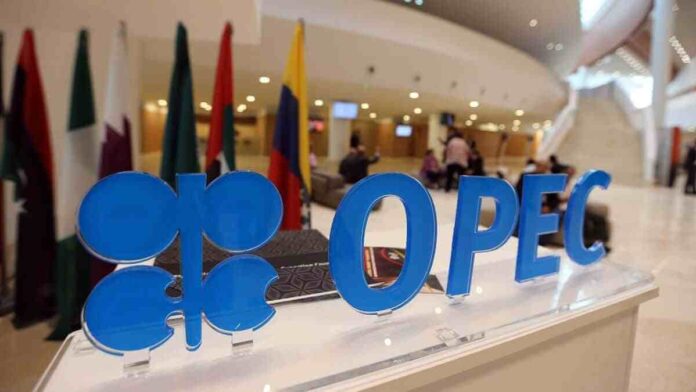OPEC Sticks to Supply Cut as EU Imposes Price Cap on Russian Oil
The Organization of the Petroleum Exporting Countries (OPEC), and other major oil producers including Russia (OPEC+), said they would continue to restrict supply by 2 million barrels per day, a policy set in October that started last month and is due to run through the end of 2023.
In a statement, OPEC said Sunday’s meeting — held via video conference — had reaffirmed the decision taken in October, adding that the group was ready to meet at any time to “address market developments if necessary.”
OPEC and its oil-producing allies agreed to stick to their output targets as the oil markets struggle to assess the impact of a slowing Chinese economy on demand and a G7 price cap on Russian oil on supply.
The decision at an OPEC+ meeting on Sunday was made a day ahead of the planned implementation of two measures aimed at hitting Russia’s oil revenues in response to its invasion of Ukraine: a European Union boycott of most Russian oil imports and a price cap of $60 per barrel on Russian exports imposed by the EU, the Group of Seven countries and Australia.
It is not yet clear how much Russian oil the two measures could take off the global market, which could tighten supply and drive up prices. READ: Crude Oil Prices Rise as US Dollar Slides
The world’s second largest oil producer has been able to reroute much of the shipments it once made to Europe to customers in India, China and Turkey. Moscow has said it would not sell its oil under the price cap and was analysing how to respond.
OPEC+, which includes Russia, angered the United States and other Western nations in October when it agreed to cut output by 2 million barrels per day, about 2 percent of world demand, from November until the end of 2023.
Washington accused the group and the world’s biggest oil producer, Saudi Arabia, of siding with Russia despite Moscow’s war in Ukraine.
OPEC+ argued it had cut output because of a weaker economic outlook. Oil prices have declined since October due to slower Chinese and global economic growth and higher interest rates, prompting market speculation the group could cut oil output again.
But on Sunday, OPEC+ decided to keep the policy unchanged. Its key ministers will next meet on February 1 while a full meeting is scheduled for June 3-4.
JP Morgan said on Friday that OPEC+ could review production in the New Year based on new data on Chinese demand trends and consumer compliance with price caps on Russian crude output and tanker flow.
The cuts agreed in October, the biggest since the start of the pandemic, drew criticism from the United States. The Biden administration called them “shortsighted” and said they would hurt low- and middle-income countries by pushing energy prices higher.
Since then, oil prices have instead pulled back, as traders have focused on how ongoing coronavirus lockdowns in China and global recession fears could hit demand.
G7 nations, the European Union and Australia agreed Friday to impose a price cap of $60 a barrel on Russian oil shipped to other countries that have not adopted an embargo.
The move, which also takes effect Monday, is aimed at depriving the Kremlin of revenue while avoiding a price shock by keeping Russian oil flowing to some markets. #OPEC Sticks to Supply Cut as EU Imposes Price Cap on Russian Oil









